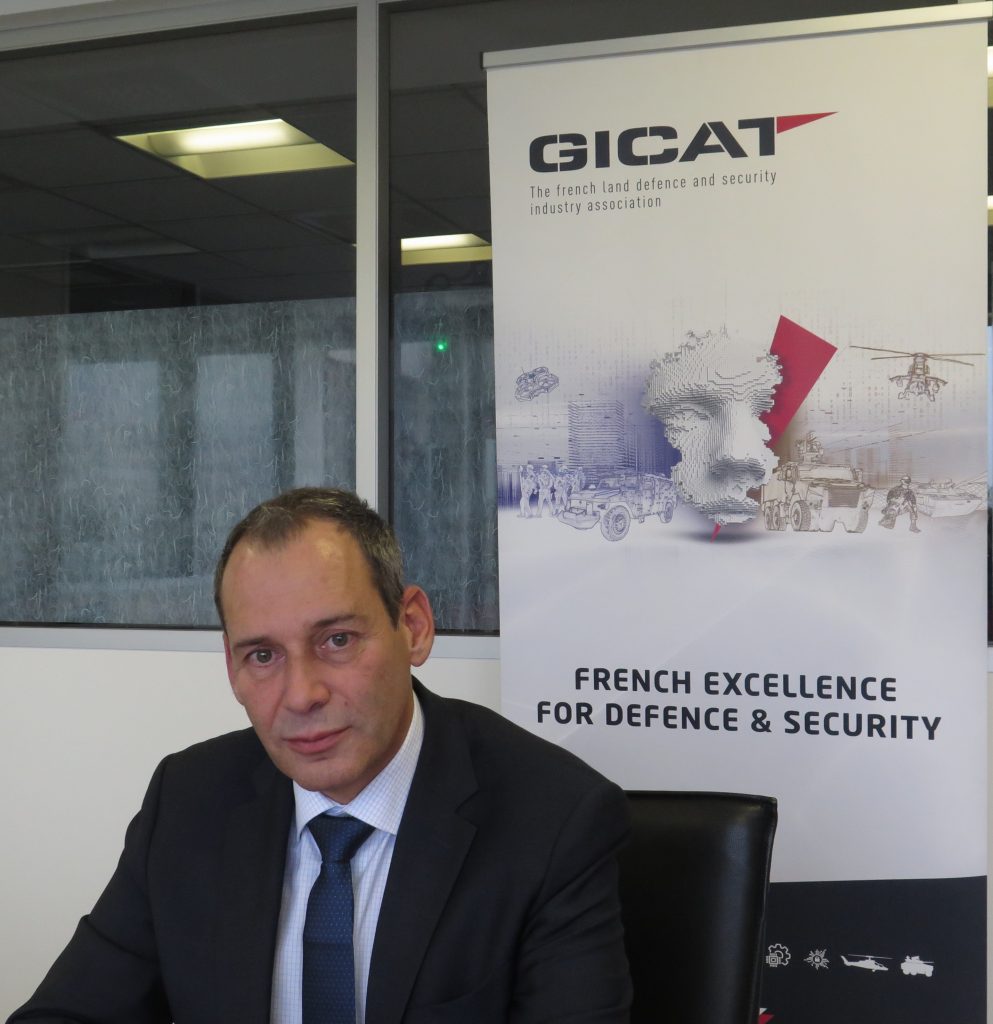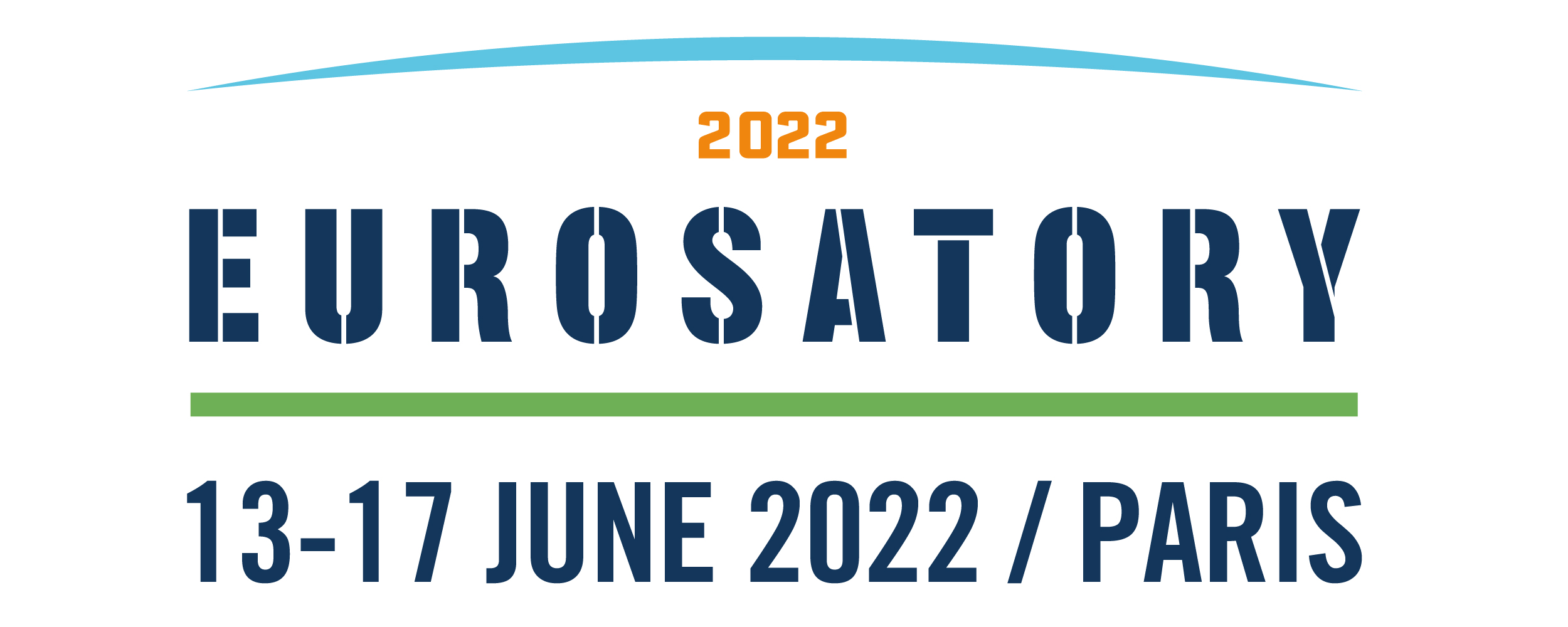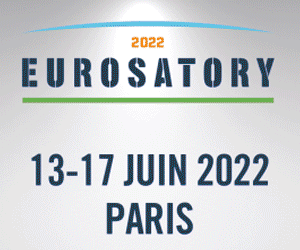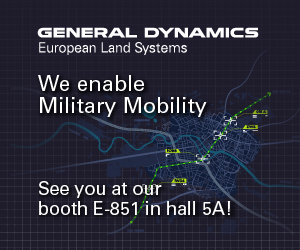By Joseph Roukoz.
On the side-lines of the preparations for Eurosatory 2022, the official Show Daily interviewed Marc Darmon, President of the French land and airland defence and security industry association (GICAT) i, on the future of the land defence industry. In France, military exports, defence Europe, modern battlefield technologies and the importance of the Eurosatory exhibition. The GICAT represents more than 300 members and almost 56 start-ups (GENERATE).
As Chairman of GICAT, how do you see the future of the French land defence industry?
The French Defence and Security industry in the land and air-land domains today represents 45,000 highly qualified jobs, all over France and not relocatable. Our industry benefits from an annual turnover of 7.5 billion euros and exports on average 50% of its total production, which allows it to contribute to the economic development of both urban and rural areas. Thus, 1 euro invested by the State in the French Defence and Security industry generates 2 euros in direct and indirect turnover after 10 years (source from the IHEDN Defence Economics Chair).
It is a high-tech industry, at the service of our forces, that ensures our sovereignty, which is extremely relevant in the context of the current crisis. Our oldest equipment is over 40 years old. It is imperative that we renew it with more efficient equipment adapted to new operational needs while guaranteeing optimal protection for our soldiers. This is underway thanks to the SCORPION programme launched in 2014.
What could happen after Scorpion?
Underlying the SCORPION programme and collaborative combat is the perspective of high-intensity warfare. The notion of « high intensity » implies that no limit is set on the use of force and that the commitment of resources is total for a nation whose vital interests are threatened. SCORPION is a collaborative, scalable and flexible tactical combat system capable of fulfilling all current and future operational missions of the Army. It is itself made up of several segments: new vehicles (JAGUAR, GRIFFON and SERVAL), the renovation of the Leclerc tank, the Scorpion Information and Communication System (SICS), and the “Contact” operationnal Communication programme via info-centric battles, which constitutes SCORPION’s central nervous system.
The 2019-2025 military programming law provides for the acceleration of the SCORPION programme: 50% of new medium armoured vehicles will be delivered by 2025 with the targets achieved at the end of 2030. However, in the context of high intensity combat other capabilities will have to be improved in the framework of the TITAN programme, which is the extension of SCORPION’s ambitions in terms of joint and combined projects: connectivity (combined arms, joint and combined forces), the European Main Ground Combat System (MGCS) project, the renovation of the Infantry Armoured Combat Vehicle (VBCI), future artillery (precision and range), ground-to-air defence to support the force, successors to combat and manoeuvre helicopters, automated systems (drones and robots: the ambition of VULCAIN), the effects in the immaterial domain (IT battles in defence, attack, and information),as well as the construction and delivery of nearly 10,000 trucks in ten years.
It is therefore essential that the end of the current, and the future Military Programming Law, maintain this momentum and increase upstream studies focused on preparing the future of the air-land sector.
What role will exports play in the defence industrial base?
Exporting is key for our manufacturers since it represents 50% of their turnover, the domestic market being too small to recoup the investments made. It enables innovations to be promoted to strengthen our position against tough competition. Export is also an essential diplomatic tool of soft power and influence, the objective of which is to offer high-tech equipment to our partners. The few notable successes of 2021 came from projects initiated long before. The health crisis has caused us to lose the ability to launch new contracts, which will have short-term repercussions: our manufacturers are very worried about 2022-2023.
One of Europe’s weaknesses is limited R&D investment, taking into account both state and business funding. To what extent can the GICAT coordinate the axes of R&D? How do you work with the DGA to avoid duplication and guarantee optimal R&D budgets?
The GICAT, through its members, within the Research, Technology and Innovation (RTI) commission, maintains an ongoing dialogue with the DGA and the Army in order to make them aware of sectorial issues. We consider that the level of upstream studies is insufficient to prepare for the future deadlines to come in the air-land sector that TITAN represents. The budgets of the European Defence Fund (EDF), while essential, are small. They will not be able to replace national budgets if we want to stay in the « race » within the framework of future industry rationalisations. Several tens of thousands of jobs are at stake. Above all, it is the only option for our country to remain sovereign. Buying off the shelf does not ensure sovereignty in the long term.
Some of the GICAT’s main member companies are part of multinationals, for example, MBDA, Thales and Nexter within KNDS, to name just a few. From the point of view of the GICAT, how do you see a trend towards Europeanization of the land defence industry on the Old Continent?
There are three different concepts:
– Firmly integrated companies from a multinational perspective, such as Thales, MBDA and Airbus, which are managed according to global product lines while being national in their country, after a long period of rationalisation.
– In France, there are a large number of French subsidiaries of foreign groups (Volvo for ARQUUS, Saab, Patria, etc.).
– Rationalisation of the land industrial sector is just beginning. KNDS is a recent merger, and it will only be a success if it is supported by a real cooperation programme, hence the need for a concrete commitment of states, over the long term, within the framework of the MGCS programme.
The exacerbated competition and the fragmentation of European systems and industries (the Italian Leonardo, the German group KMW, the British BAE Systems, etc.) require all players to converge towards future operational needs, while giving priority to the domestic market. It remains important to support the French Defence Industrial and Technology Base (BITD), which represents 4,000 companies and 200,000 jobs, and which has demonstrated its expertise in a broad spectrum of activities for nearly forty years.
Besides mobility, protection and firepower, there are many other areas of increasing importance on the land battlefield, such as networking to name only SCORPION. Which technologies could become key in the years to come from the land forces point of view?
Collaborative combat is an essential change in concept: for example, one vehicle sees a target, another decides to shoot, and the third vehicle fires, all in real time. Collaboration is a historical concept, but we can go much further today, with combined and cooperative engagement, distributed protection, etc.
In SCORPION, the levels of collaboration will evolve from on-board to deployed combat, starting from sharing the position of pawns in theatre (Blue Force Tracking), to operational protection where the system proposes the best effector within the force to call on to deal with the threat in the shortest possible time.
As for hybrid simulation, this makes mixing virtual reality and a weapon system reality, and represents the future in the kinetic field, with the implementation of direct-energy weapons (laser against drones for example) or electromagnetic (range for artillery). The massive influx of weapons capable of shooting beyond direct sight will change the rules of the game. Medium-range missiles (MMP) for the infantryman, for vehicles (Jaguar), the high-frame missile (MHT) for the Tiger MkIII, precision artillery and mortars shells will bring real disruption. In the field of Maintenance in Operational Condition (MCO), additive manufacturing and predictive maintenance are the two expected breakthroughs. These new systems will completely change the doctrine of use and operations.
Formerly mainly devoted to armoured vehicles, artillery and armaments, the land battlefield has now evolved, with armies permanently operating in a two-dimensional space, when they are not fighting along coasts, in space and cyber incumbent on multi-domain operations. To what extent does this new approach require rethinking or reorganising the structure of GICAT in order to cope with a much larger portfolio of companies, engaged in areas that were not considered by your organisation in the past?
The emergence of new areas of conflict – informational warfare, especially in the Sahel, the considerable importance of drones, illustrated in particular during the conflict in Nagorno-Karabakh in the autumn of 2020, etc. – does not dilute the land domain because it is on this theatre that we see this complexity emerging and on which all the new logics intersect.
Land engagement is likely to see three major underlying strategic evolutions:
– The return to high-intensity combat, which SCORPION aims to prepare
– The effects in the immaterial domain, through information warfare, via network-centric warfare, cyber warfare, protection against cyber attacks and the info-war around technological warfare and fake news.
– The issue of the environment, with new standards, new energy sources and new fuels.
Faced with these new challenges, which require an evolution in the subjects of reflection and synergies, GICAT organises and structures its activities around two new commissions:
– The operational energy commission, which works on the means to develop new fuels and initiating the shift to the energy transition (hybridisation, H2…) .
– The digital commission, which aims to coordinate the state-industry relationship on subjects such as information warfare and info-centric combat. All the big digital players are now members of GICAT (Thales, Atos, Sopra Steria, Airbus, etc.).
Eurosatory 2022 will restore an indispensable international showcase for the French land armaments industry after a 4-year absence. Can we say that the COVID crisis has contributed to undermining the visibility of many companies and caused them to lose sales opportunities, especially for export?
COVID has disrupted opportunities to travel. Manufacturers have initiated fewer new projects than if their staff had been able to travel more widely. However, the dynamism of the domestic market has increased. We note that arms exports continue to grow across Europe, as mentioned above.
Eurosatory is back for the first time in four years. There is a real desire for visitors and exhibitors to meet and present their products. We are very confident that the show will be a great success.
The next show should focus on both cyber warfare and the air-land domain which mobilises drones as well as helicopters. How do you see the evolution of these two essential areas?
The effects in cyberspace constitute a major subject for the sector, in particular in the perspective of high intensity combat, but not only. Current feedback shows that this threat exists in asymmetric combat. In the air-land sector, the rise of automated systems (drones and robots) will definitely change future engagement by increasing numbers and protecting soldiers in the most dangerous cases. The main difficulty is that our enemies in this area will not apply our ethics, which impose that humans remain in the decision-making loop. One may fear, and this has already occurred, the massive use (packs and swarms) of Lethal Autonomous Weapons Systems, more commonly known as « robot-killers », which are automatons capable of carrying out lethal action in an automated manner without human intervention.

Coming back to Eurosatory, in addition to the dominance of the defence sector, the DNA of the show, we must not forget its broad security component, which in 2022 will have an important place, in line with the activity of GICAT member companies: 12% of the turnover of our members is in security.
In addition to focusing on security throughout Thursday, June 16, the show includes a hall dedicated entirely to this theme, in which GICAT members will have their place with the Ministry of the Interior. We will be highlighting the themes of trust across territories and the securing of the Paris 2024 Olympic and Paralympic Games and companies will be able to demonstrate their know-how in these areas.
Civil security will also be part of the show’s vocabulary with a new HELPED space dedicated to the management of humanitarian crises, which concern more than 60 members of our group.
The security industry also has a significant export component, because, like the defence sector, the internal market is not sufficient to support industry growth. Trade fairs such as Eurosatory are for this reason privileged forums for developing export momentum in line with the strategy of the industries in the sector.
The activity of the security industry is currently structured through the Strategic Sector Committee (CSF) created in 2018 at the request of Edouard Philippe and which I also chair. This is the eighteenth and last industrial sector created, under the aegis of the National Industry Council (CNI). The GICAT and the CSF therefore defend the coherent action of defence and security.
i GICAT, a professional association created in 1978, now has more than 270 members. The member companies of GICAT – large groups, mid-sized companies and SMEs – cover a wide spectrum of industrial, research, service and consulting activities for the benefit of military and civilian, national and international components involved in security and / or defence. land and air land. In 2017, GICAT launched its own start-up accelerator, Generate, which positions it as a pioneer in the French defence and security innovation ecosystem. Today, he supports 44 companies in their development. The General Commission for Exhibitions and Exhibitions (COGES), a subsidiary of GICAT, organizes national and international exhibitions such as Eurosatory in France, ExpoDefensa in Colombia, ShieldAfrica in Ivory Coast and Platinum Security Exhibition in Monaco.










